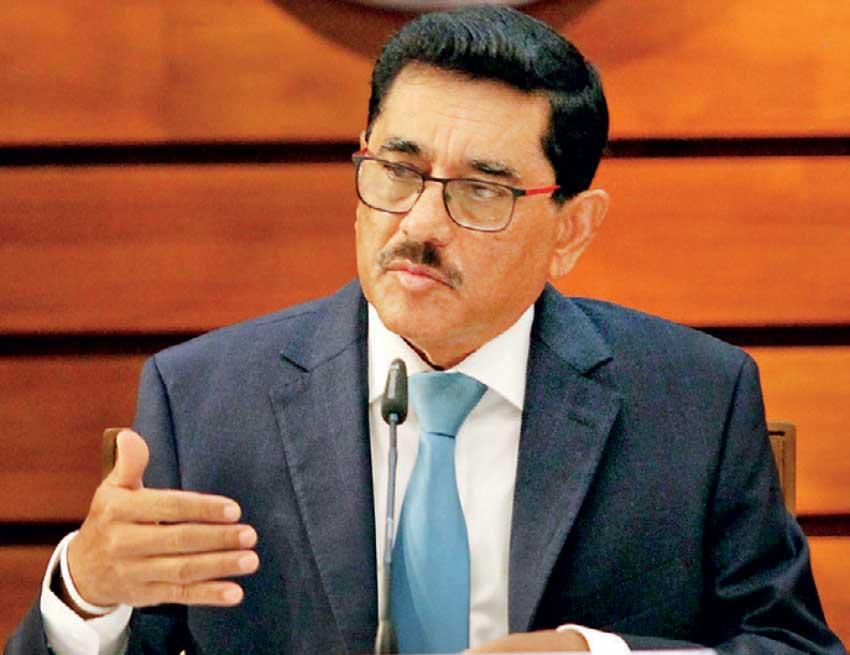Reply To:
Name - Reply Comment

Dr. Nandalal Weerasinghe
Pic by Pradeep Dilrukshana
After delivering a much-anticipated rate hike, yet short of the size some expected, the Central Bank said it is ready to take further steps to rein in inflation and bring it to its desired 4 to 6 percent range, which is at least 12 to 18 months away at the best-case scenario and also contingent on global commodities prices.
“The Central Bank is prepared to take further policy measures appropriately to help reinforce greater stability in the economy in the period ahead, while ensuring a faster return of inflation to the targeted 4-6 percent level over the medium term,” the Central Bank said at the press conference held to announce the monetary policy on Thursday.
The Monetary Board raised its key policy rates by 100 basis points on Thursday, citing to tame hyper inflationary pressures engulfing the country since the botched rupee float in March.
However, questions were raised from one section as to what difference could a 100-basis-point hike do to bring down the hyperinflation while another segment said it was antithesis to what the policymakers should be doing to address inflation, which is caused almost entirely by the supply squeezes and supply chain disruptions.
At a Bloomberg television interview held soon after announcing the monetary policy decision, the host asked Central Bank Governor Dr. Nandalal Weerasinghe what difference could 100 basis points make when the borrowing cost had already more than doubled since the beginning of this year.
In response, Dr. Weerasinghe said inflation went beyond their expectations after the jumbo rate hike on April 8 and their current forecasts show that it is going to further accelerate towards 70 percent levels in the next few months, almost all of which he attributed to the supply-side constraints.
However, the higher interest rates cannot tamp down supply-side price pressures, instead what they can do the most is to bring the demand in parity with the limited supply.
Therefore, further demand destruction policies by way of higher interest rates could spell disaster, not just for the poor and vulnerable but to the entire population, who have significantly tightened their belts since March this year.
Thursday’s decision showed a change of stance by the Central Bank, as in May it said no amount of interest rate hikes could temper the current price pressures, which are caused by the supply shortages, supply chain disruptions and predominantly the collapse in the value of the rupee and the one-off price adjustments delivered to untie some of the key loss-making public utilities from the budget support.
What added more to the price pressures since then were the VAT rate increase from 8 percent to 12 percent and the worsening shortages, which sent the prices of all commodities soaring.
However, another segment of economists argues that if the policymakers have recognised that the true cause of the current inflation is supply, what they must do is to lessen the borrowing cost and make available the liquidity necessary at least to a targeted segments to prop up manufacturing and supply to both domestic and international markets, which will cool down inflation at home while generating dollar incomes, which could ease imports.